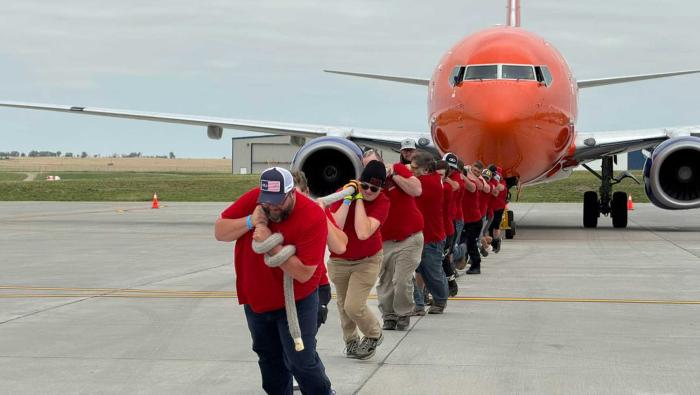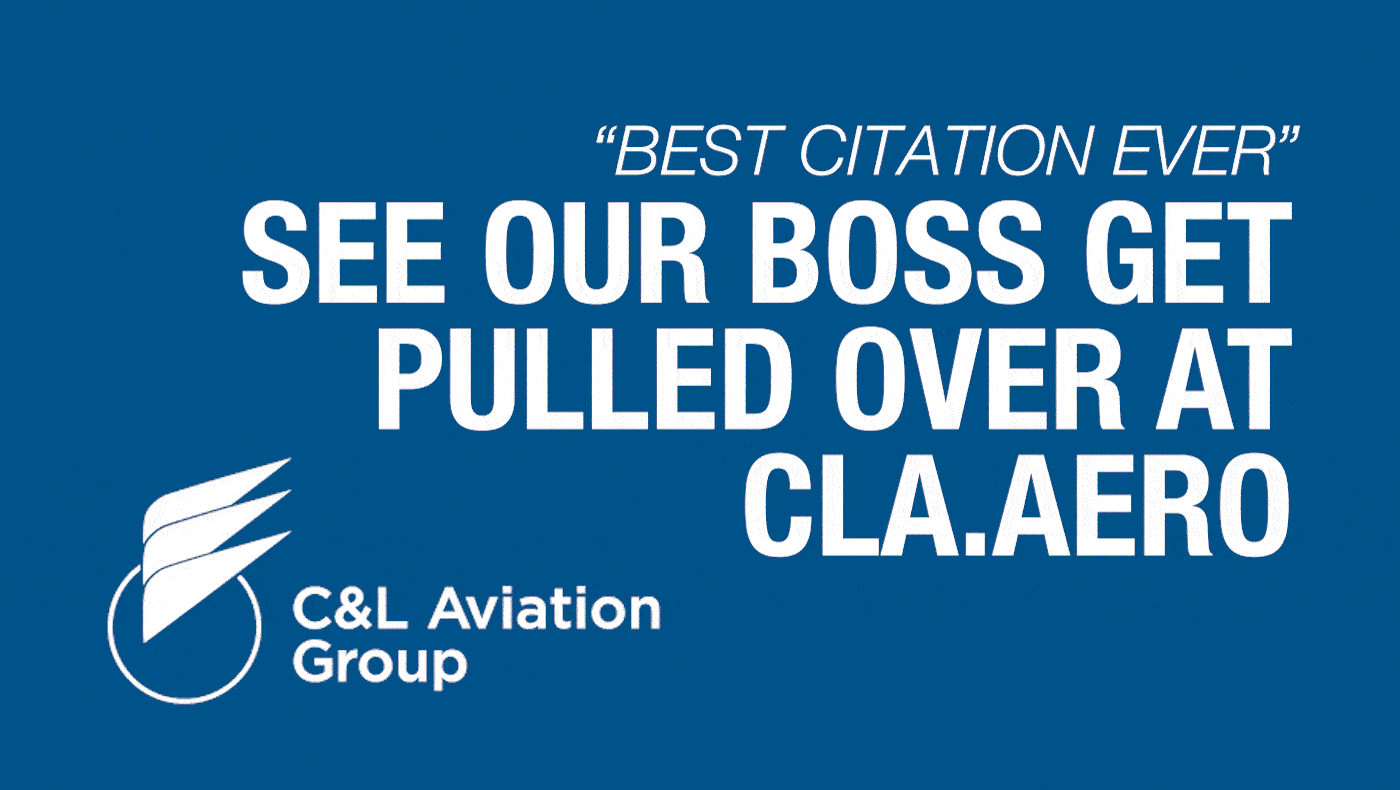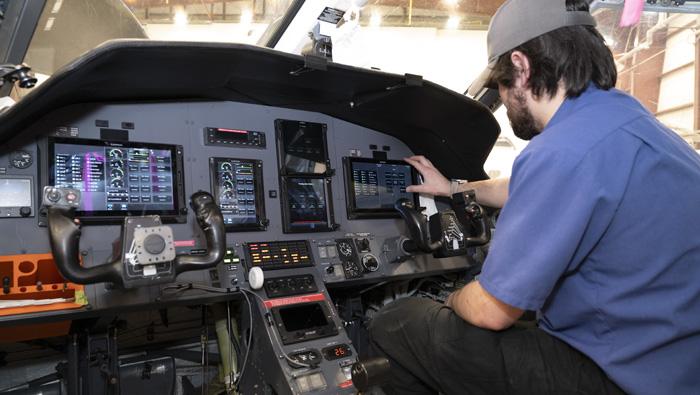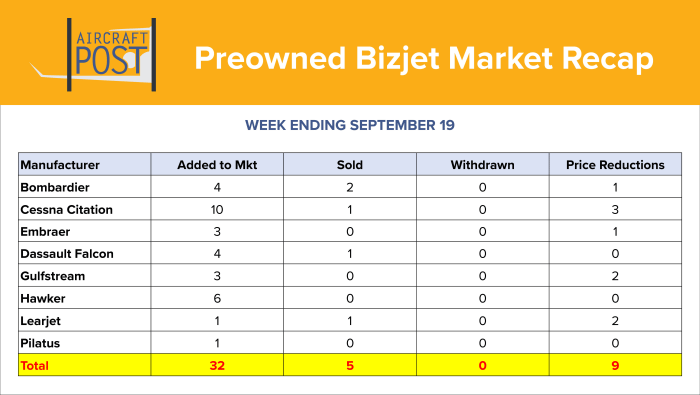|
Corporate Angel Network recently completed its 70,000th patient flight. Michael Newton, a colon cancer patient, was transported from Minnesota to New York for treatment at Memorial Sloan Kettering. Hanson Communications donated its Bombardier Learjet 40XR for the flight, with Bruce Hanson and his son Dominick serving as pilots. Newton returned home two days later following post-operative scans. “The CAN flights allow me to go to a top-level cancer center and get some of the best care that I could ask for,” Newton said. “Meeting the Hansons was very cool. They were very welcoming and so friendly, wanting to know about me and my story.” This flight demonstrated the collaborative nature of CAN’s operations, with aviation partners including Signature Aviation, Million Air, and Drivania Chauffeurs supporting the mission by ensuring seamless ground handling and transportation services. Bruce Hanson emphasized the alignment between his company’s values and CAN's mission: “From our perspective, it just feels right that Hanson Communications should be involved with an organization like CAN.” His son noted that participating in CAN flights has strengthened their professional and personal relationship while contributing to meaningful patient care. The nonprofit has been providing free transportation for cancer patients aboard business aircraft since its founding in 1981. According to CAN v-p of development Courtney Easton, more than 200,000 cancer patients annually require long-distance travel for specialized treatment. |
|
|
Earlier this month, on September 3, two aircraft at two different airports overshot runways only to be saved by an engineered materials arresting system (EMAS). One incident occurred in Illinois, while the other took place in Florida; there were no serious injuries. The following day, the FAA celebrated EMAS as an important technology that “enhances aviation safety by preventing potentially catastrophic runway overruns.” A far better strategy is to keep the aircraft on the runway. According to the Flight Safety Foundation (FSF) Approach and Landing Accident Reduction (ALAR) toolkit, “Assuring that a safe landing can be conducted requires achieving a balanced distribution of safety margins between: (1) the computed final approach speed (also called the target threshold speed); and (2) the resulting landing distance.” The FSF ALAR Task Force found that these high-energy approaches were a factor in 30% of the 76 approach and landing accidents and incidents analyzed. Another FSF study found that 30% of 329 worldwide approach and landing accidents were related to “fast approaches and/or touchdowns.” The only acceptable method to adjust the final approach speed is the guidance contained in the aircraft operating manual. Each approved adjustment to the final approach speed has a corresponding landing distance value. Additional airspeed corrections arbitrarily added by the flight crew negate the approved aircraft landing performance data. |
|
|
Revised advanced passenger information system (APIS) requirements for travel into and out of Mexico were instituted this week. AIN confirmed that a new two-step submission process now applies to all private and charter flights. According to business aviation flight data provider OpsGroup and Miami-based international ground handler CST Flight Services, the first APIS submission must be filed within two hours before departure for both inbound and outbound flights. The second filing must be confirmation of the passengers on board, “sent after doors close and before takeoff.” Operators can submit their APIS information three ways: through ARINC (said to be the only authorized vendor for submitting manifests); some third-party service providers who can handle the process of submission directly via their ARINC account; or a completed Excel spreadsheet sent by email. However, the email option is limited to four trips to and from Mexico per year. What’s more, when using email, the submission gets forwarded to ARINC’s system, but no response is returned. Submitting through a dedicated ARINC portal will ensure a response with any errors flagged. Failing to comply with APIS requirements may result in fines ranging from $1,471 to $14,711, said CST. Since Mexico first issued APIS rules in 2012, the requirements have evolved several times with changes to timelines and procedures. An online guide to filling out and filing the forms is available. |
|
|
Industry leaders didn’t hold back in calling for a return to zero tariffs for aviation/aerospace at the recent U.S. Chamber of Commerce’s Global Aerospace Summit in Washington, D.C. Airbus CEO Guillaume Faury opened with a reminder of what’s at stake: “The so-called zero for zero, the 1979 agreement with no tariffs on aerospace goods, has led to the very successful benefits for all involved.” Faury boasted Airbus’ role in strengthening the U.S. aerospace trade position, particularly with its final assembly lines in Mobile, Alabama. “We contribute to the positive balance of aerospace in the U.S.,” he said. The European aerospace leader called the current setup a “North Atlantic Ecosystem” that binds the U.S. and European Union together. “If zero for zero did not get approved, how much would that have put a dampening effect in terms of orders, whether it’s from airlines or leasing companies?” Faury asked. “The very strong demand that we see in the market…would’ve had negative impact on the cost base, on the efficiency of what we do. We would have continued to do the same, but what we have now is much more effective.” Embraer Commercial Aviation CEO Arjan Meijer said tariffs are being paid for the customer and are “distorting the market and creating behaviors that are not favoring global manufacturing.” |
|
|
Sponsor Content: Western Aircraft Maintenance downtime doesn’t have to be stressful. Western Aircraft works side-by-side with operators to anticipate needs, align schedules and foster trust. With proactive planning, honest communication, and true partnership, we transform MRO shop visits into a seamless process, helping you focus on flying, not frustrations. |
|
|
Authorities in Autauga County, Alabama, arrested a man on Wednesday after gunfire struck a Haynes LifeFlight helicopter as it approached a landing zone to assist in a medical call, according to the Autauga County sheriff’s office. Ambulance services provider Haynes LifeFlight dispatched the aircraft around 4:20 a.m. to a landing zone prepared by volunteer firefighters to pick up a patient. “Upon Haynes LifeFlight arriving, several shots were fired at the medical helicopter, striking the right side window as it approached the landing zone,” the sheriff’s office said. “A flight nurse within the medical helicopter was struck by the ricochet of the bullet.” Despite the gunfire, the pilot landed the aircraft safely and deputies, already en route to assist, worked with firefighters and the pilot to identify the origin of the shots. Sheriff’s deputies arrested 48-year-old Peter Ellison at the scene and recovered a firearm. The injured nurse was treated at the scene and the patient requiring emergency care was transported by ambulance to a hospital. Ellison was booked into the Autauga County Metro Jail for shooting into an occupied vehicle, with a $30,000 cash-only bond, and faces federal charges. The FBI and FAA have taken over the investigation, according to the sheriff’s office. Haynes LifeFlight confirmed in a Facebook post that the aircraft was struck by gunfire and remains under inspection and repair. |
|
|
Business aviation customers are abandoning traditional ownership patterns while demanding heightened security solutions and technology integration, according to industry executives speaking last week at the 2025 JetNet iQ Summit. The transformation encompasses fundamental changes in customer demographics, with the conventional “finance bro” customer evolving into what Joe Barber, chief commercial officer of Clay Lacy Aviation, described as the “digital economy pathfinder” representing biotech entrepreneurs and generational wealth transfers. McKinsey research indicates women now control approximately 32% of global wealth, translating to increased female involvement in aircraft ownership decisions. “We’re seeing more women in charge of aircraft ownership, specifically. We’re seeing it more often that they’re making decisions,” Barber said during the panel discussion on Tuesday afternoon. “Customers in the room.” Fortune 500 companies and ultra-high-net-worth individuals continue to dominate the private aviation customer base, but management transitions are reshaping operational approaches. Michael Fedele, president of Execaire Aviation, observed that younger executive teams “view business aviation tools differently than their predecessors” and “often want to see it being used more commercially than perhaps in the past.” The generational shift extends beyond corporate environments to family wealth structures, where established decision-making hierarchies face disruption as responsibilities transfer to new stakeholders with different priorities and management philosophies. |
|
|
President Donald Trump’s Mar-a-Lago Club has submitted plans for a new helipad, four years after the original pad was demolished at the close of his first presidency. The proposed design, filed with the city August 21, calls for a 60-foot-diameter concrete pad on the estate’s west lawn, 10 feet wider than the previous structure. Harvey Oyer, the project’s attorney, told the Palm Beach Daily News that the larger size is required to accommodate the Marine Corps’ VH-92A Patriot helicopters, which have replaced the older VH-60N and VH-3D aircraft. The previous Mar-a-Lago helipad was constructed in 2017 after Palm Beach’s Landmarks Preservation Commission approved the project with conditions, including demolition once Trump left office. When first proposed, the helipad generated debate in Palm Beach. Coverage by Collective Magazine in January 2017 described the exemption from the town’s longstanding helicopter ban as unusual, while the Palm Beach Post reported a month later about objections from neighbors, citing noise and security impacts. The U.S. Marines argued the pad was needed for presidential security. The new helipad plan was designed by Rick Gonzalez of REG Architects, who also led the 2017 project. Town records indicate the Landmarks Preservation Commission could take up the matter at its October 22 meeting. |
|
|

Photo of the WeekTug harder! FBO Overland Aviation at North Dakota’s Williston Basin International Airport (KXWA) partnered with the airport to raise $20,000 for Make-A-Wish North Dakota at the inaugural Williston Plane Pull and Fly-In Movie event last month. The day’s activities kicked off with a plane pull, with six teams competing to move a Sun Country Airlines Boeing 737 one hundred feet across the tarmac via tug rope. Afterwards, attendees gathered inside Overland Aviation’s hangar for family activities, treats, and a screening of Disney’s “Planes” movie. Thanks to Avfuel for sharing this photo. Keep them coming. If you’d like to submit an entry for Photo of the Week, email a high-resolution horizontal image (at least 2000 x 1200 pixels), along with your name, contact information, social media names, and info about it (including brief description, location, etc.) to photos@ainonline.com. Tail numbers can be removed upon request. Those submitting photos give AIN implied consent to publish them in its publications and social media channels. |
|
|
|
|
AINalerts News Tips/Feedback: News tips may be sent anonymously, but feedback must include name and contact info (we will withhold name on request). We reserve the right to edit correspondence for length, clarity, and grammar. Send feedback or news tips to AINalerts editor Chad Trautvetter. |
|
AINalerts is a publication of AIN Media Group, 214 Franklin Avenue, Midland Park, New Jersey. Copyright 2025. All rights reserved. Reproduction in whole or in part without permission is strictly prohibited. |















